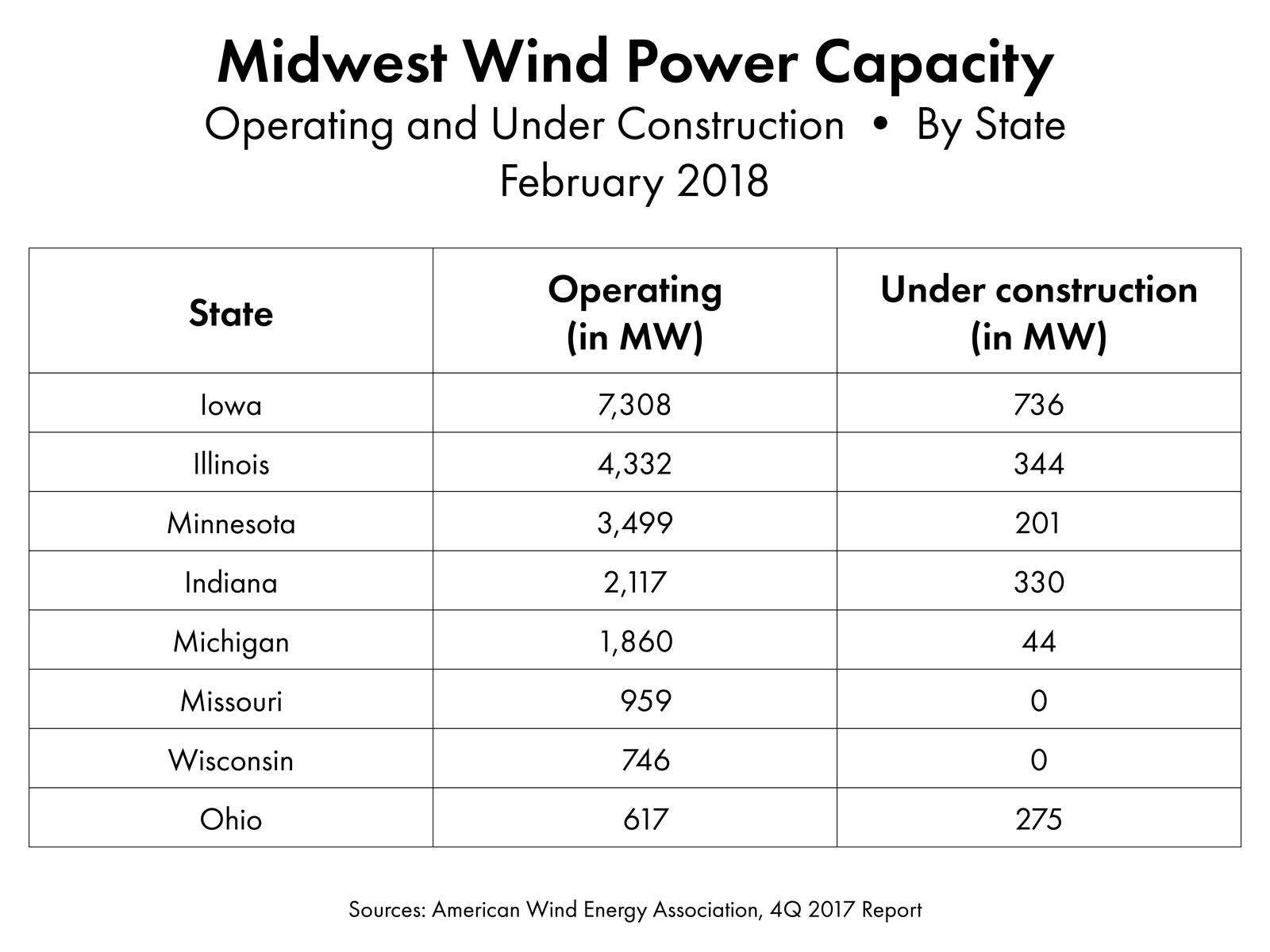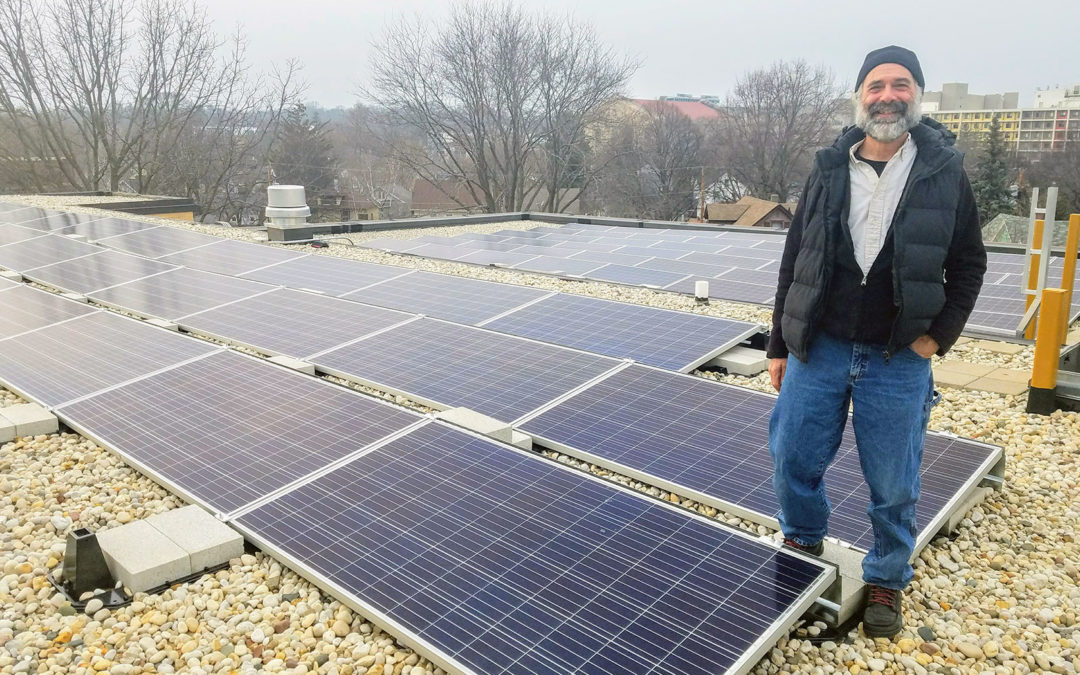
by Tyler Huebner | May 10, 2018 | Programs, RENEW Wisconsin, Solar for Good
RENEW Wisconsin’s Solar for Good program is issuing grants to 15 Wisconsin nonprofit organizations to install new solar electric systems. The grants total over $145,000 and will fund 10% to 20% of each organization’s project. The overall value of these new solar arrays is set to exceed $1.2 million.
Planned for installation over the next twelve months, these projects expect to add over 460 kilowatts (kW) in new solar power. The size of each project will vary based on the needs of the organization.
This is the second round of Solar for Good grants, following Fall 2017’s inaugural opportunity when sixteen organizations were offered grants. The program is primarily funded by solar philanthropists Cal & Laurie Coulliard of Deerfield through their Coulliard Solar Foundation.
“Nonprofit organizations are leaders, gathering places, and signs of hope across our Wisconsin communities. By helping them produce their own solar energy, we are empowering them to showcase solar energy’s capabilities and continue their leadership role for the people they serve. We are very proud of these nonprofits and can’t wait to see their shining solar projects get completed!” said Tyler Huebner, RENEW Wisconsin’s Executive Director.
The following organizations have been offered Solar for Good grants to install new solar electric systems:
Alice’s Garden, community and urban farm, Milwaukee
Community Homestead Inc, special needs organization, Osceola
First Unitarian Society of Madison, house of worship, Madison
Heartland Housing Inc., community housing, Milwaukee
Heartland Montessori School, early childhood education, River Falls
Heckrodt Wetland Reserve, outdoor education program, Menasha
Memorial United Church of Christ, house of worship, Fitchburg
Quasimondo Physical Theatre, arts education and training, Milwaukee
St. Bridget Catholic Church, house of worship, River Falls
VFW Post 8483, veterans service organization, Madison
Walnut Way Conservation Corp, environmental conservation organization, Milwaukee
Worldbuilders Inc., humanitarian organization, Stevens Point
Two organizations have asked to remain anonymous at this time.
Solar for Good plans to issue another round of grant funding in fall 2018. Individuals who want to learn more about the program can visit our website.
About RENEW Wisconsin
RENEW Wisconsin is a nonprofit organization which promotes renewable energy in Wisconsin. We work on policies and programs that support solar power, wind power, biogas, local hydropower, and geothermal energy. More information is available on RENEW’s website.
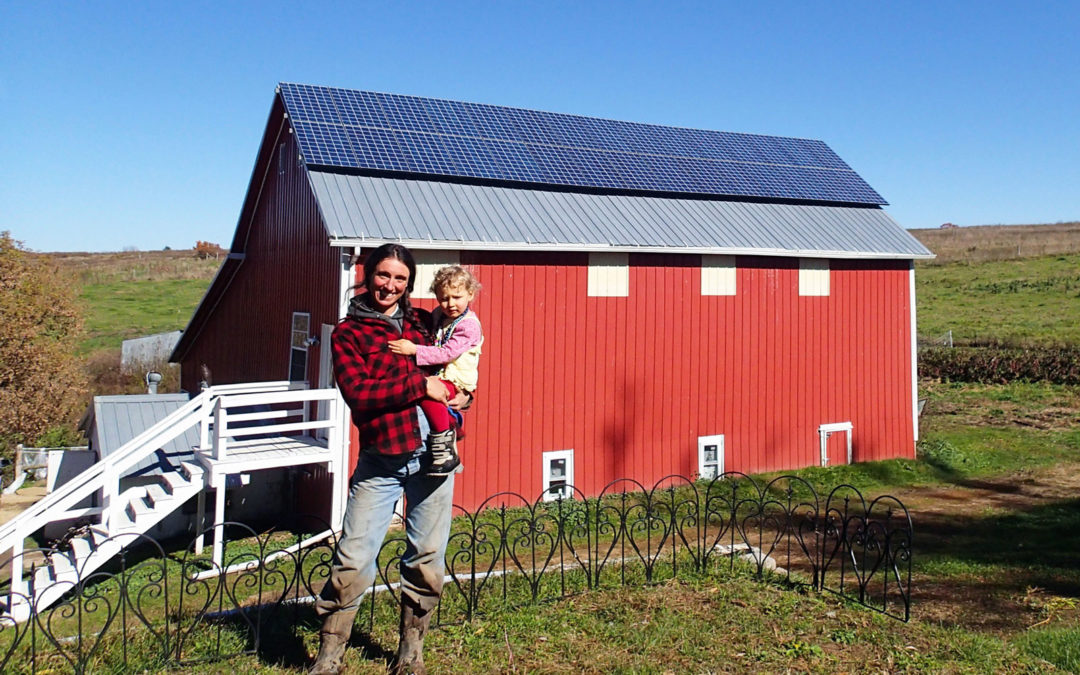
by Tyler Huebner | May 3, 2018 | Biogas, Focus on Energy, Geothermal, RENEW Wisconsin, Solar
Focus on Energy’s Renewable Energy Program Funded for 2019-2022
Today, the Public Service Commission of Wisconsin made preliminary decisions to allocate approximately $5.5 million in incentives per year to the renewable energy programs within “Focus on Energy” for the years 2019 through 2022.
The decisions came as part of the four-year planning process for the Focus on Energy program. Focus on Energy delivers incentives and education to help utility customers reduce energy usage and save money through energy efficiency and renewable energy technologies and projects. The total budget for the statewide Focus on Energy program is approximately $100 million annually.
RENEW Wisconsin’s Executive Director Tyler Huebner stated, “Today’s decisions to fund the Focus on Energy renewable energy incentive programs at adequate budget levels will set up the solar, geothermal, small wind, and bioenergy markets for a successful four-year period. We advocated for a consistent, predictable program and the PSC delivered, which is a win for customers and the growing industry of small businesses who do this work all across the Badger State. Based on recent experience, this level of funding should incentivize approximately 2000 homes and perhaps 600 or more businesses and nonprofits as they pursue renewable energy projects throughout the next four years.”
“Renewable energy creates jobs in Wisconsin, develops home-grown power sources, and enables a cleaner environment for future generations,” said Huebner.
Today’s verbal decisions and discussion:
• Allocated approximately $5.5 million per year for renewable energy incentives for 2019-2022.
• Established that four sub-markets will be served: residential, small business, mid-sized business, and larger business projects. The mid-sized business program will be new for 2019. Nonprofits and local governments fall into the “business” categories as well.
• Allows flexibility to meet market demand in these four sub-markets
• The residential and small business programs will continue to be first-come, first-serve programs. The mid-sized business and large business programs will start out being run through a request-for-proposal process.
• A study being conducted on the renewable energy programs may inform improvements to the program when it is completed.
• Opportunities to support rural and agricultural communities using $5 million in unspent funds will be explored, with a staff memorandum on possible options to be developed by July 1. $20 million was previously allocated towards biodigesters, with $15 million being awarded to the BC Organics project in Brown County in 2016.
“The Commissioners definitely heard the collective comments of our industry and stakeholders to make the renewable energy program as streamlined and business-friendly as possible. RENEW Wisconsin will continue to work with the Commission, PSC staff, and the Focus on Energy program administrators to make the programs simple for customers and the renewable energy marketplace, while ensuring cost-effective outcomes,” said Huebner.
Want to champion renewable energy victories like this?
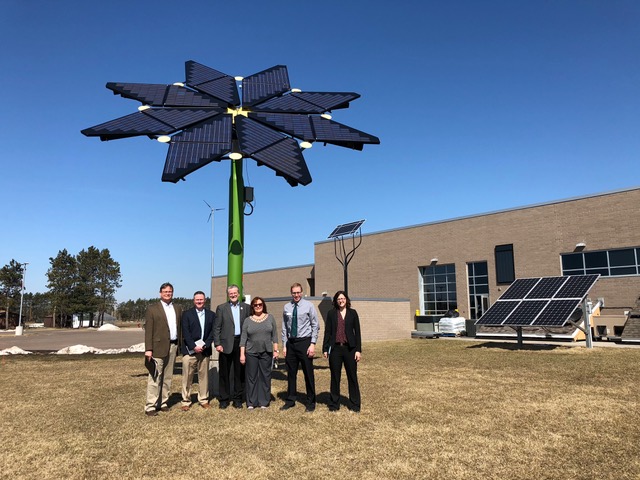
by Jim Boullion | Apr 30, 2018 | Biogas, RENEW Wisconsin, Renewables, Solar
Now that the snow has finally melted and spring is here RENEW Wisconsin is ramping up its activities around the state of Wisconsin. This last week was especially busy for me as I visited central and western Wisconsin to learn about renewable energy across the state and to meet and talk about the trends in renewable energy with our elected officials.
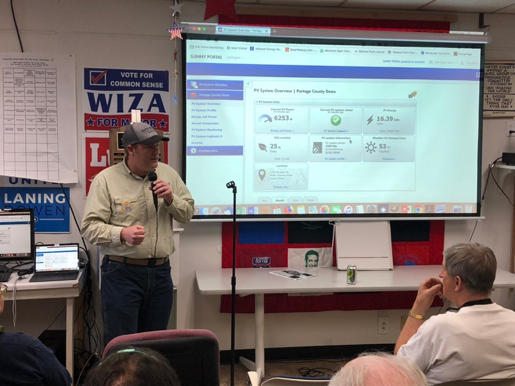
Portage County Democratic Headquarters Solar Ribbon Cutting
On Sunday, April 22nd, the Democratic Party of Portage County celebrated Earth Day 2018 by holding a ribbon cutting event for the brand new solar array that they installed on their headquarters building in Stevens Point, Wisconsin. The event was moderated by State Representative Katrina Shankland and more than 40 people were in attendance. This was the first solar array on any Democratic Party office in the State of Wisconsin. They are betting there will be plenty more very soon!
RENEW member Doug Stingle of North Wind Renewable Energy installed the system. Doug explained some of the technology behind the 7.4 kW array and showed how it will offset an anticipated 67% of the Democratic Party office’s annual electrical usage.
To close the event, Rep. Shankland introduced me and asked me to give an update on what RENEW Wisconsin is working on to advance renewable energy in the state.
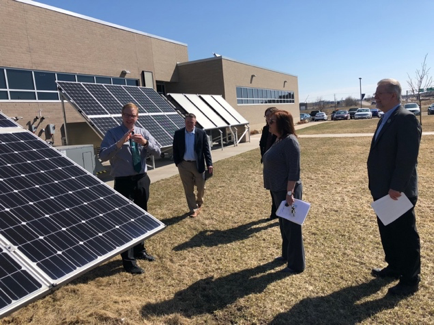
Tour of Chippewa Valley Technical College
On Monday, April 23rd I was very excited to visit the Chippewa Valley Technical College (CVTC) and their Energy Education Center and get an interesting tour of the facility by Adam Wehling, Dean of the Agriculture, Energy and Transportation Department.
Joining me on the tour were Deb Erwin of Xcel Energy and three local state legislators from the Eau Claire area; Representatives Kathy Bernier (Lake Hallie), Warren Petryk (Eleva) and Rob Summerfield (Bloomer).
The Energy Education Center offers diverse training in various energy generation, energy distribution and energy efficiency technologies. The renewable energy certificate is integrated into their other trades programs such as Electrical Power Distribution, and HVAC Technician.
All three legislators were very interested to hear about the tremendous reduction we are seeing in price of wind and solar energy and fast growth that those technologies will see in Wisconsin in the near future and working together to address the challenges and opportunities that these emerging technologies will present.
Leading the Charge Conference
On April 23rd and 24th I continued my North-West Wisconsin renewable energy tour in Eau Claire and participated in a local government summit hosted by the Wisconsin Academy of Sciences, Arts & Letters titled “Leading the Charge” that explored emerging issues in local energy planning and resilience in Wisconsin communities.
Speakers from across the state discussed their local efforts to increase energy efficiency and how local governments can use renewable energy and efficiency to reduce emissions and increase energy resiliency. Other sessions discussed solar energy financing programs for private businesses, residences and local governments, the future trends in energy usage such as electric vehicles and the jobs and training necessary to grow the renewable energy industry in Wisconsin.
One on One with Senator Patty Schachtner
On April 24th, following the Local Government Summit, I stopped in to see Wisconsin’s newest State Senator Patty Schachtner (Somerset) to introduce myself and to talk about some of the issues facing renewable energy in the next few years. Senator Schachtner drew national attention when she won a special election in the 10th State Senate district to replace Senator Sheila Harsdorf who retired from the seat in December to assume the position of Secretary of the Wisconsin Department of Agriculture, Trade, and Consumer Protection.
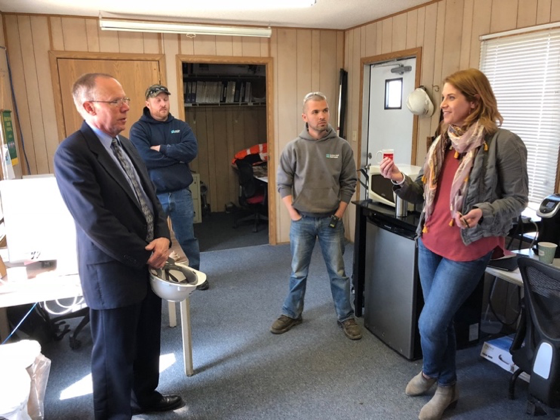
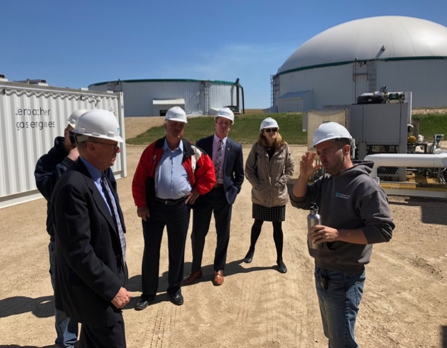
Biogas Digester Tour
On Wednesday, April 25th I joined RENEW Wisconsin member Jessica Niekrasz of Clean Fuel Partners for a tour of their biodigester facility located just north and west of Madison. On the tour was General Donald Hoffman, a retired four-star general of the United States Air Force who is doing research on the fast-developing world of renewable energy technologies and how they can make our nation more secure. Also joining the tour was Jon Plumer, who is a member of the Lodi Town Board and is running for election in the 42nd Assembly District which is also located just north of Madison.
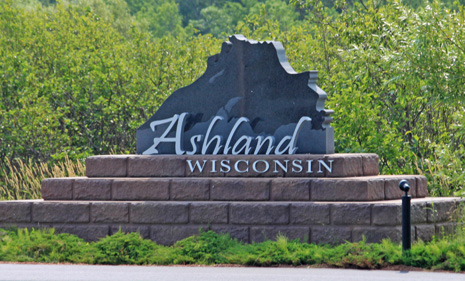
by Jodi Jean Amble | Apr 20, 2018 | Solar
The City of Ashland, Wisconsin is seeking competitive design proposals from local artists for an art installation in H. Pearson Plaza, behind City Hall. According to the city’s RFP, the main goal of this installation will be to incorporate solar panels to provide an educational opportunity as well as to further beautify the park area. Energy created from the solar panels will be monitored and described on a plaque adjacent to the installation. H. Pearson Plaza has approximately 7,000 square feet of area to work with, is centrally located off Main Street, and visible on US Highway 2. This project will demonstrate the dedication of the City of Ashland to sustainability, as well as further distinguish the city as artistic and unique.
Ashland is a small city with an outstanding collection of natural, cultural, and historical assets. Ashland utilizes the waterfront with a marina, walking/biking trails, various parks, 3 beaches, boat launches, a pier, RV park, redevelopment plans of the superfund site, and a vision for development of a nearly 2,000 foot ore dock base into a unique civic space. Historical influences shaping the present include educational institutions that reflect a commitment to ecology and place, including Northland College and Wisconsin Indianhead Technical College; a downtown filled with history and creativity, with numerous historical architectural landmarks, a historic district on the National Register, and a growing tradition of local public art; and a grid street network that provides the building blocks for a walkable, neighborly, and well-connected community
The City of Ashland Planning and Development Department is looking to expand the City’s vision as a sustainable city of the future. As one piece in multiple initiatives to expand the sustainability infrastructure, the City would like to commission a local artist to design and install a sculpture incorporating solar panels. This piece would serve as a demonstration of solar technology as well as further beautify the newly redesigned park.
The City of Ashland, Wisconsin will be receiving proposals for the above noted project until Friday, June 1, 2018. For more information and to submit, please see the City of Ashland’s RFP.
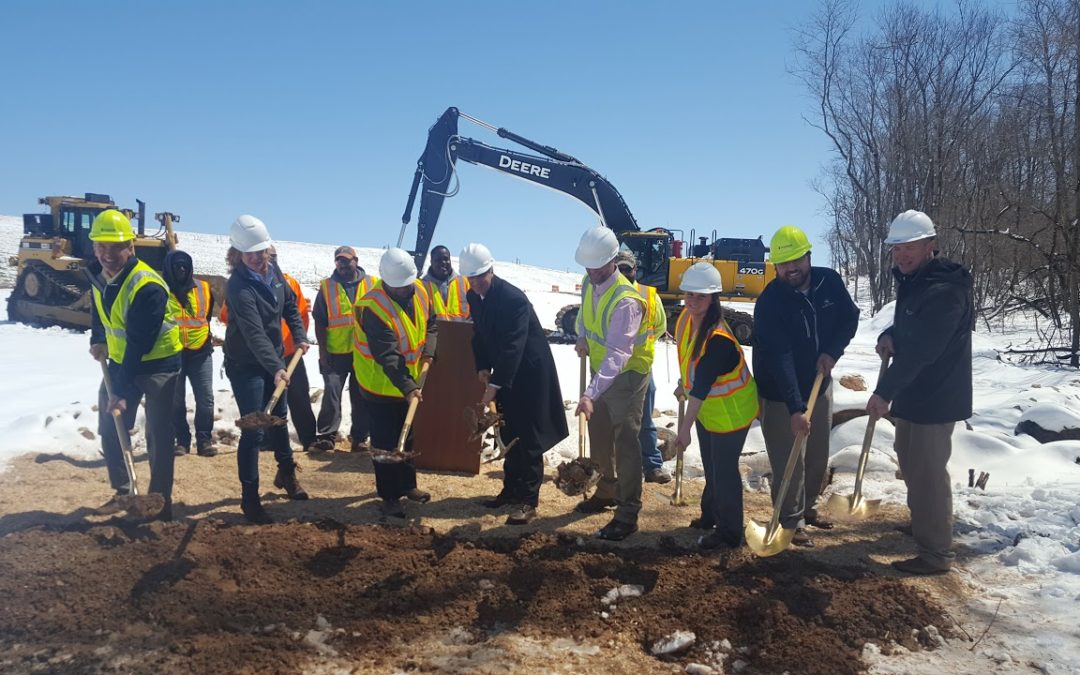
by Michael Vickerman | Apr 20, 2018 | Biogas, Renewables, Solar, Wind
In the spirit of leading by example, Dane County launched two separate and distinct initiatives this week to power its own operations with clean energy resources. One initiative involves becoming a co-investor in solar and wind projects that will supply Dane County offices with zero-emission electricity. The County will issue a Request for Proposals in early May.
The other project, with an estimated price tag of $25 million, will clean up the methane coming from the Yahara landfill and several local dairy farms and convert it into compressed methane fuel for the County’s vehicle fleet. RENEW member businesses BioFerm and Clean Fuel Partners are part of the team of contractors developing this project. Construction of the project will commence this spring, and should wrap up in the first half of 2019.
County Executive Joe Parisi circulated an email summarizing the renewable energy initiatives detailed below.
Good morning,
As we approach Earth Day this weekend, it is my pleasure to share with you exciting news of two projects that continue to make Dane County a leader in renewable energy in Wisconsin.
This week I announced that Dane County will seek partners in the coming weeks to help develop new solar and wind farms across Wisconsin. It’s our latest investment in clean, renewable energy in an effort to improve efficiency and reduce climate change causing emissions. The county will release a request for proposals, seeking offers from prospective solar and wind developers on projects Dane County could become an investor in. Projects will be evaluated this summer, with recommendations made in time for 2019 budget preparations. The goal is to facilitate the development of projects that generate renewable electricity to offset the amount of energy used to run county operations. In turn, keeping with the county’s benchmark of being 100% sustainable.
And yesterday, I helped kick off construction for an innovative project that will turn garbage and cow manure into renewable fuel for thousands of vehicles across the region and country. This project is also expected to significantly increase our lakes clean-up efforts by increasing revenue opportunities for local biogas digesters. Taking cow manure and garbage and turning it into vehicle fuel is good for the air we breathe, the waters we fish and swim in, and county taxpayers. We are committed to accelerating work to clean up our lakes and financing efforts to produce renewable energy, and this project does both.
Design work of the new facility is complete and the remainder of the project is out for bid now. Construction is expected to begin in the coming weeks with the system online by spring of 2019. This project is the first in the nation to be able to receive biogas from multiple off-site locations and connect that renewable gas with CNG gas stations locally and across the nation.
For more information, please see the full releases below and the links to the media stories:
Renewable Proposals: http://host.madison.com/wsj/news/local/govt-and-politics/dane-county-to-seek-proposals-for-funding-private-renewable-energy/article_87ca0f31-9879-57fa-bc8e-4fca47a35006.html
Landfill Facility: http://www.nbc15.com/content/news/Groundbreaking-of-23-million-landfill-project-480315243.html
In partnership,
Joe Parisi
Joseph T. Parisi
Dane County Executive
Dane County Seeks Partners to Develop Solar, Wind Projects Across Region, State
County Executive Joe Parisi announced today that Dane County will seek partners in the coming weeks to help develop new solar and wind farms across Wisconsin. It’s the latest investment in clean, renewable energy by the County Executive who’s prioritized installing solar at county facilities, most recently making up to 40 acres of land at the Dane County Regional Airport available for solar, all in an effort to improve efficiency and reduce climate change causing emissions.
“Dane County is leading the way for renewable energy in Wisconsin,” said Dane County Executive Joe Parisi. “This is the right thing to do for our environment, for our economy and for taxpayers. This project will increase local clean energy jobs, will reduce carbon emissions and ease the burden for taxpayers.”
In the coming days, the county will release what’s called a request for proposals, seeking offers from prospective solar and wind developers on projects Dane County could become an investor in. Projects will be evaluated this summer, with recommendations made in time for 2019 budget preparations. The goal is to facilitate the development of projects that generate renewable electricity to offset the amount of energy used to run county operations. In turn, keeping with the county’s benchmark of being 100% sustainable.
Dane County currently owns more solar than any other public entity in the state with nearly 600 kW at 15 sites across the county, not including the upcoming Airport Project which will be the largest public sector project in Wisconsin. That project could generate over 8 megawatts of power, almost three times more than the largest solar project currently operating in the region, a 2.25 megawatt facility in Beloit.
http://dane-county-airport.com/
In addition to the airport, Parisi’s budgets have funded solar projects at the Dane County Job Center, the new East District Highway Facility and Medical Examiner’s Complex, the offices of Dane County Land and Water Resources, the Dane County Library Service and others. Additional future solar projects are planned for the Alliant Energy Center.
The new solar projects will reduce carbon dioxide emissions by the equivalent of taking 1700 cars off the road, reducing direct energy costs by over $2.1 million over the next two decades. The new Dane County East District Highway Garage that opened last year has well over 800 solar panels and is the second largest municipally-owned solar project in the state.
In addition to the solar developers, the project will employ local electricians and construction workers. There are more than 2,800 people employed in the solar industry in Wisconsin and 460 in Dane County, according to the Solar Foundation, which tracks solar jobs nationwide. Dane County is second only to Milwaukee County in the number of solar jobs in Wisconsin.
Expanding the county’s investment in solar projects will help continue the county’s tradition of being 100% sustainable. For more than the past two decades, Dane County has generated renewable electricity at its landfill, fueled by the naturally occurring methane given off by the waste. Presently, the landfill makes enough electricity to power 4,500 homes.
The county has initiated an innovative project to instead convert this methane into clean burning vehicle fuel, to further reduce carbon emissions by thousands of tons, the primary contributor to climate change causing greenhouse gases. In addition to helping Dane County achieve nearly 100% renewable status, the two landfills since 1998 have earned over $35 million for taxpayers thru the sale of renewable electricity. The County’s total renewable power generation reduces CO2 emissions the equivalent of taking over 5,200 cars off the road.
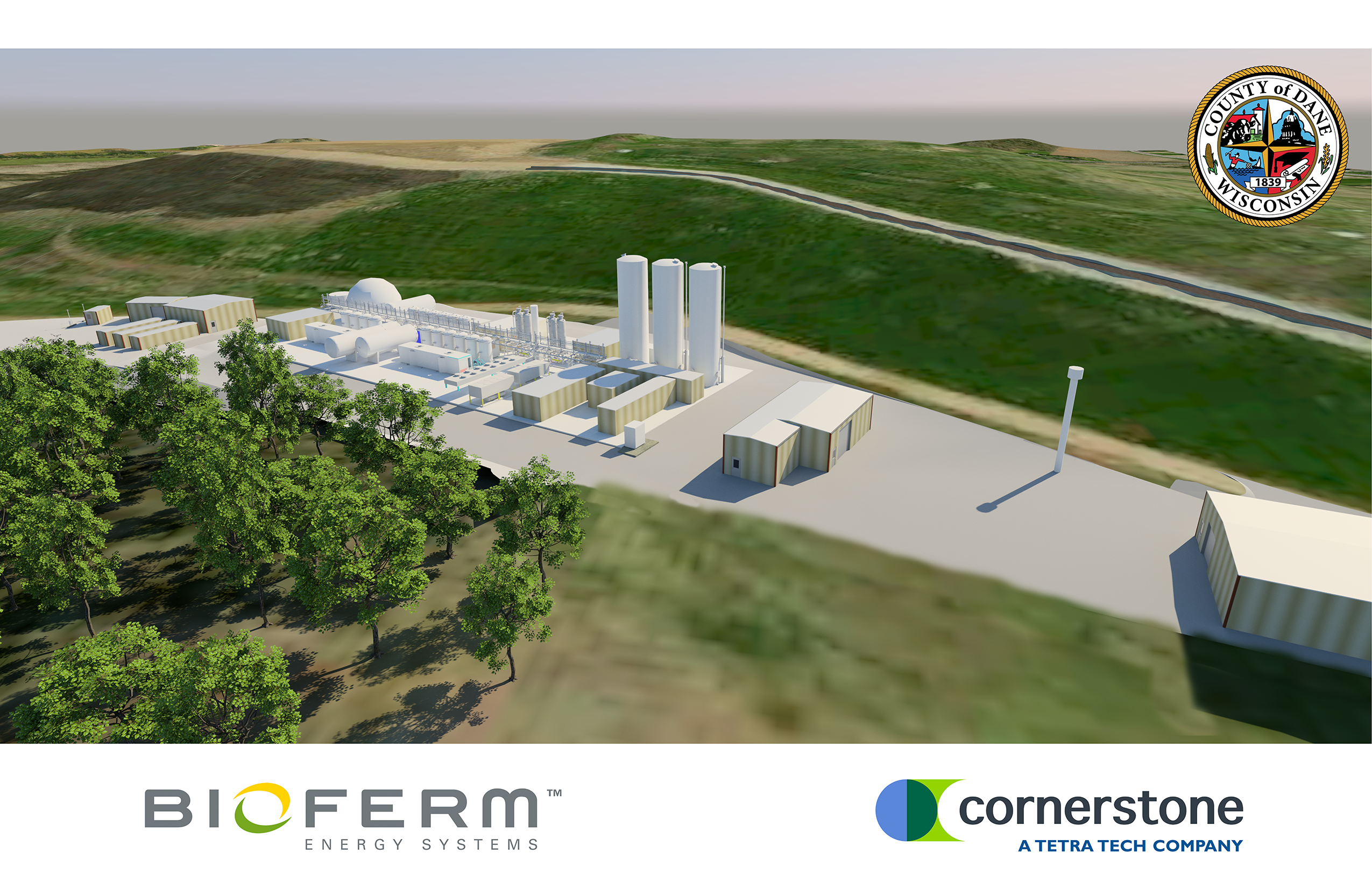
Dane County Executive Parisi Kicks Off Construction of First of its Kind Project in the Nation
Creates Economic Incentive for Development of Lakes Clean Up Efforts
Today, Dane County Executive Joe Parisi kicked off construction for an innovative project that will turn garbage and cow manure into renewable fuel for thousands of vehicles across the region and country. This project is also expected to significantly increase our lakes clean-up efforts by increasing revenue opportunities for local biogas digesters.
“Taking cow manure and garbage and turning it into vehicle fuel is good for the air we breathe, the waters we fish and swim in, and county taxpayers,” Parisi said. “Dane County is committed to accelerating work to clean up our lakes and financing efforts to produce renewable energy, and this project does both.”
Design work of the new facility is complete, BIOFerm has started ordering its system components, and the remainder of the project is out for bid now. Construction is expected to begin in the coming weeks with the system online by spring of 2019.
Dane County announced this today at a press conference with project partners Cornerstone Engineering, Clean Fuel Partners and Bioferm Energy, who is designing and supplying the biogas cleaning system for the project.
“BIOFerm is honored to be building this amazing green project for the County landfill which will serve as a beacon for all municipalities on how to maximize resources,” said Nadeem Afghan from BIOFerm. “We are proud to be a local company working to deliver this project and creating great economic value and jobs in the process. This project once completed will have the capability to deliver ½ billion gallons of clean transportation fuel which would be a great contribution by Dane County to save our environment from fossil fuel economy.”
The Dane County landfill currently generates electricity with the gas collected from the breakdown of garbage and organic material. Presently, the landfill makes enough electricity to power 4,500 homes. This new facility will enable the County to convert its landfill gas into vehicle fuel, thereby eliminating thousands of tons of carbon emissions, a leading cause to the extreme weather events triggered by climate change. In addition to the project’s environmental benefits, it is estimated the county will generate enough revenue from the project to payback its $25 million cost of the project in just a few years. That creates economic opportunity for both Dane County taxpayers and owners of “Cow Power” facilities north of Lake Mendota to convert their operations to gas production.
The County’s 2018 budget included the final phase of funding totaling $23.5 million for Dane County to build a biogas processing facility at its landfill and connect it with an adjacent interstate pipeline. That facility will clean up all of the collected landfill gas and turn it into renewable vehicle fuel. Of the total $23.5 million cost, $5.5 million is new funds in the 2018 budget. Those additional funds will allow the county to build a gas off-loading station where other biogas producers, like dairy digesters located in the North Mendota watershed, can bring their cleaned up fuel and have it injected into the pipeline. The gas would first need to be purified and compressed by the owner’s equipment before being hauled to the landfill for injection into the interstate pipeline.
This Dane County project is the first in the nation to be able to receive biogas from multiple off-site locations and connect that renewable gas with CNG gas stations locally and across the nation.
The 2018 county budget also included a $200,000 study to look into where additional digesters could be located to process manure into biogas. This will keep more manure off the land, reducing phosphorus on fields prone to runoff during heavy rain events that can get into waterways and cause algae blooms.
“Dane County continues to find game changing solutions to protect our lakes, produce renewable energy, and reduce climate change emissions,” said Jessica Niekrasz, Chief Administrator Officer of Clean Fuel Partners, whose company purchased the community digester near Waunakee in late 2015. “Our innovative private-public partnership with family-owned dairy farms will continue the work to economically remove phosphorus from the watershed.”
Digesters reduce greenhouse gas emissions by collecting and destroying methane that would otherwise be emitted to the atmosphere. They also help farms manage manure more responsibly, which reduces harmful runoff to lakes and streams. The county’s new facility at the landfill will make it economically feasible for manure digesters in the county to continue to produce renewable energy, reduce greenhouse gas emissions, and clean up our lakes.
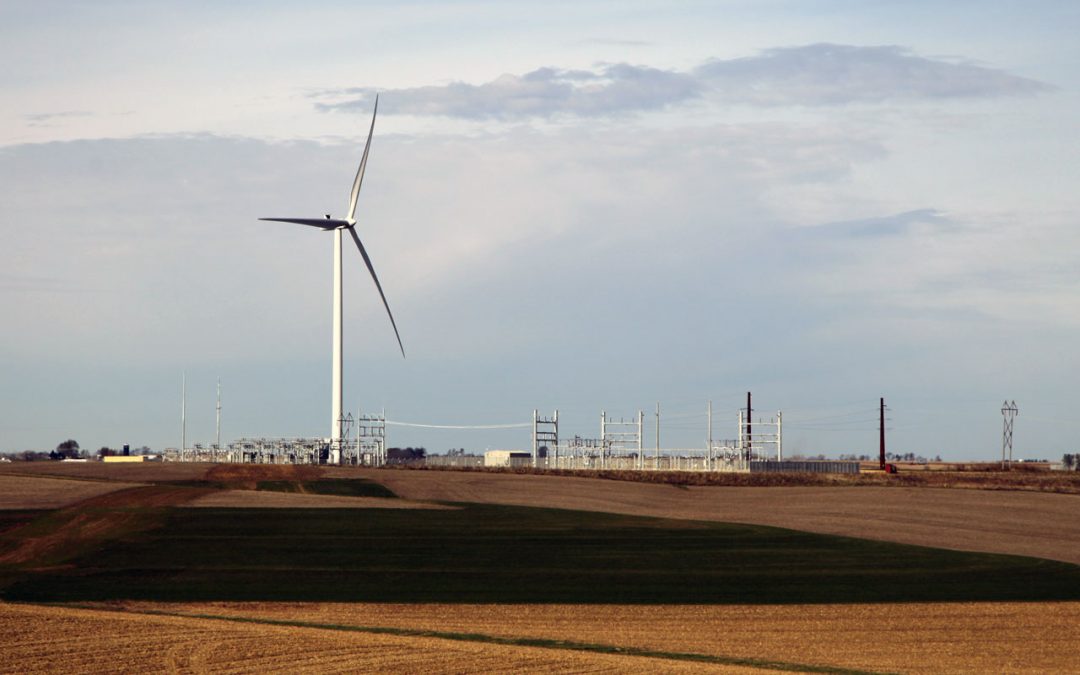
by Michael Vickerman | Mar 29, 2018 | Renewables, Solar, Utilities, Wind
A commentary by Tyler Huebner and Michael Vickerman
March 28, 2018
Kohler Co., a signature Wisconsin manufacturer, is set to join the dozens of U.S. corporations buying renewable electricity to displace fossil fuel generation on the electrical grid. But the source of this clean energy is nowhere near the company’s headquarters in Kohler. The wind farm that will sell this electricity to Kohler is instead located in east central Kansas, nearly 800 miles away.
A leading manufacturer of kitchen and bath products worldwide, Kohler recently entered into a 15-year contract with Enel Green Power North America to purchase electricity generated from a 300-megawatt (MW) wind power plant now under construction. Kohler’s share of Enel’s Diamond Vista wind farm is 100 MW, which will produce enough zero-emission electricity to equal the consumption of nearly 40,000 typical households.
Like many other corporate wind purchases, however, the electricity bought by Kohler will not directly supply its own operations. Instead, Kohler will resell the wind generation it buys to the wholesale electric market serving the Southern Plains states.
At the same time, Kohler will retain the renewable energy credits (RECs) associated with the output. These credits will be used to offset the greenhouse gas emissions from the electricity actually used to power all of the company’s U.S. and Canadian operations, including its flagship manufacturing facility in Kohler, Wisconsin, as well as its nearby golf and resort properties. This action will reduce Kohler’s global carbon footprint by 26%.
This is by far the largest renewable energy purchase undertaken by a Wisconsin corporation, befitting an industry leader that has embraced a goal to become net carbon neutral by 2035. With more than 50 manufacturing locations worldwide, Kohler is on the lookout for innovative pathways that can achieve substantial greenhouse gas emissions with minimal impact on its bottom line.
Corporations Looking for Renewable Energy At-Scale
The economies of scale achieved by large wind projects like Diamond Vista is quite appealing to Kohler and other corporate offtakers of renewable energy. In another example of this trend, the global beer giant Anheuser-Busch committed in fall 2017 to purchase RECs from the Enel-owned Thunder Ranch wind power project under construction in Oklahoma. That transaction will enable Anheuser-Busch to reduce emissions from its electricity purchases in the United States by 50% (and garnered this logo on each bottle and can of Budweiser now sold in the U.S.)

In addition to its environmental benefits, Kohler’s purchase will set in motion a significant economic jolt that will last throughout Diamond Vista’s operating life. Unfortunately, these economic benefits will be reaped entirely by the host communities in rural Kansas, bypassing Wisconsin altogether.
Wisconsin Renewable Projects Coming Online
The recently commissioned Quilt Block wind farm in southwest Wisconsin exemplifies the economic development potential represented by renewable generation. The largest power plant energized in Wisconsin last year, this 98 MW installation will, over its lifetime, direct millions of dollars in landowner payments and tax revenues into the coffers of both Lafayette County and the host township. At the same time, Quilt Block will supply La Crosse-based Dairyland Power Cooperative and its members with clean, affordable electricity under a long-term contract.
As it happens, the developer of Quilt Block, Houston-based EDP Renewables, would like to develop additional projects near where this project was just completed. In addition, numerous solar developers are eyeing opportunities to build large-scale solar in Wisconsin. These projects could, in theory, supply local corporate or institutional customers with the renewable power they are seeking, while strengthening the local economy where the projects are built. That certainly has all the earmarks of a win-win proposition for Wisconsin.
Two Models for Wisconsin’s Success
There are two models in early stages that could facilitate these win-wins for Wisconsin companies and local economies.
The first option is a “Corporate Renewable Energy Service,” which electric utilities can put in place to connect larger customers with low-cost renewable power generated from solar arrays or wind farms located in Wisconsin. These three-party arrangements connect the corporation (or local government), the utility, and a specific renewable energy project. The benefit to the company is a relatively seamless, and perhaps cost-neutral, arrangement that flows the energy production through on their existing utility bill.
We supported Madison Gas & Electric as they pursued such a service in 2017. However, they remain the only utility explicitly offering this service in Wisconsin. We need other utilities to design and offer this type of service to enable Wisconsin-based companies to connect to home-grown renewable projects.
The second model was trail-blazed by Organic Valley last year. OV, a farmer-owned food cooperative headquartered in La Farge, Wisconsin, recently agreed to purchase RECs from new solar arrays supplying power to a consortium of municipal electric utilities in southwest Wisconsin and Minnesota.
This amounts once again to a three-party arrangement. Two separate agreements are needed: the utility and the renewable energy project owner reaches an agreement on energy price, while the corporation desiring renewable energy strikes an agreement with the wind/solar project developer on the price for the separate renewable energy credits. One difference is that the utility bill for the corporation is unchanged, while they have a new expense for the purchase of the RECs.
Compared with Kohler’s 100 MW purchase, the 12 MW of renewable generation leveraged by the Organic Valley purchase is modest, but it could serve as a model for other state-based companies and local governments to embrace.
Both of these models have merits. For a company like Kohler seeking to offset its entire North American footprint of electricity consumption, a REC model makes tremendous sense. They were able to facilitate one REC deal that substantially accomplishes their goal as opposed to working through many utilities that serve their operations throughout the continent. (It’s also important to note that Kohler plans to continue its industry-leading energy efficiency efforts and explore on-site renewable generation as well.)
What’s clear is that Kohler and Organic Valley are just the beginning for Wisconsin companies seeking large amounts of renewable energy.
Wisconsin’s whole economy will benefit most if we can maximize the number of in-state projects to serve these Wisconsin-based companies. Now is the time for our electric utilities and large corporations to work together to facilitate in-state success stories for achieving corporate sustainability goals while building Wisconsin’s local economies.
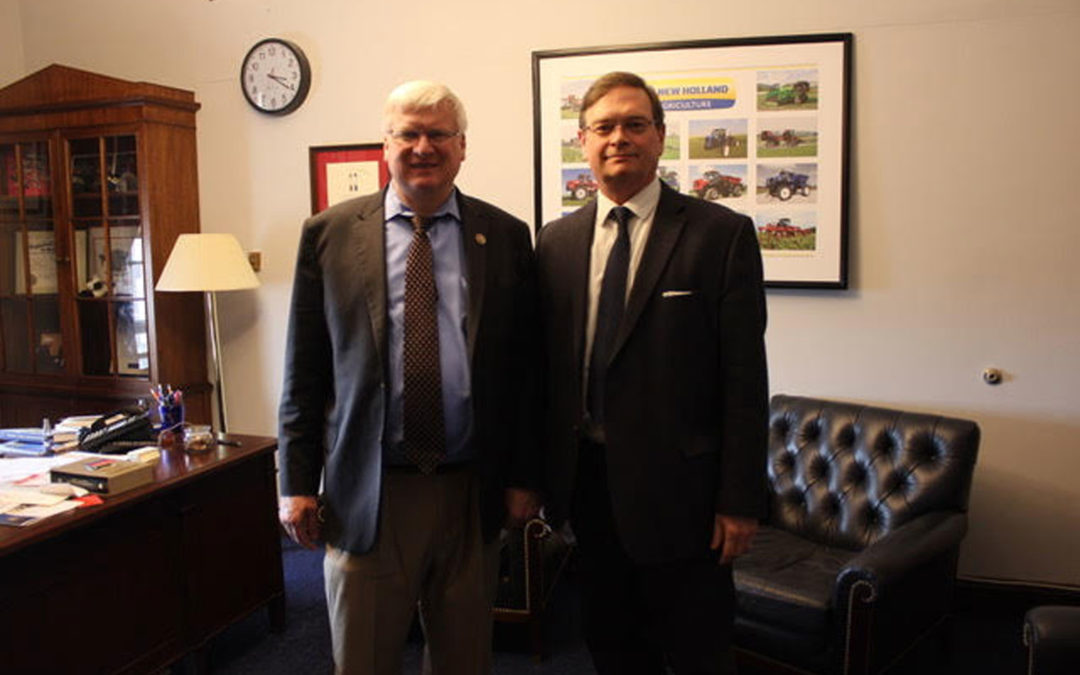
by Jim Boullion | Mar 27, 2018 | Advocacy, Biogas, RENEW Wisconsin
I had a great visit to Washington, DC the week of March 12th for a conference on Energy Policy hosted by the American Council on Renewable Energy (ACORE). While there, I also made time to visit Wisconsin’s congressional delegation. I was able to give our elected officials the latest information on the exciting growth of renewable energy in the last few years and the even faster growth that we expect renewables to experience in the future, especially in Wisconsin.
The ACORE Policy Summit was a great opportunity for me to learn about the renewable energy issues happening in Washington and around the country. Speakers included Senators Maria Cantwell (D-Washington) and Lisa Murkowski (R-Alaska), FERC Commissioner Robert Powelson, and Department of Energy Under Secretary Mark Menezes. I also met with many trade association leaders representing renewable energy such as the Solar Energy Industries Association (SEIA) and American Wind Energy Association (AWEA) as well as corporations who are leaders in the use of renewable energy and energy efficiency such as Amazon.
Among the hot topics I discussed with the congressional offices were the federal Omnibus spending bill and the significant cuts that were proposed to the Department of Energy in their renewable energy budget and funding for the Advanced Research Projects Agency-Energy (ARPA-e). (In the final Omnibus Bill deal signed by the President on March 22nd, congress not only restored the budgets of both programs, but increased them significantly!).
While visiting, I also thanked the following members of the Wisconsin delegation who signed a letter encouraging the EPA to approve applications for biogas-based electricity to qualify as a renewable fuel under the Renewable Fuel Standard program: Congressmen Mark Pocan (D-2nd), Ron Kind (D-3rd), Glenn Grothman (R-6th), Sean Duffy (R-7th) and Mike Gallagher (R-8th). This “electric pathway” would greatly assist many Wisconsin farmers to continue responsibly managing their manure and preventing runoff and ground water issues while creating renewable energy. Senator Tammy Baldwin is working hard to put together a Senate version of this letter to the EPA and I would encourage everyone to contact Senator Ron Johnson and encourage him to sign onto the letter as well.
Overall, it was a very productive and educational trip! The overriding theme that came out of the trip is that renewable energy is just now hitting its stride. It is going to get even less expensive, more reliable, grow faster and become an even more important component of the US and world energy mix!
The image above shows me with Congressman Glenn Grothman following our meeting.

by Katherine Klausing | Mar 15, 2018 | Programs, RENEW Wisconsin, Solar
Monday March 12, 2018, Madison.
For More Information
Katherine Klausing, RENEW Wisconsin
608-255-4044 x5, 614-406-1105
Katherine@renewwisconsin.org
Solar for Good, an initiative from the renewable energy advocates at RENEW Wisconsin, will offer grant funding this spring to assist nonprofit organizations with installing solar panels on their facilities.
The program is funded through a donation from philanthropists Cal and Laurie Couillard of Deerfield.
“The solar energy boom is having a positive impact throughout Wisconsin, from keeping more of our energy dollars in our pockets to protecting our natural resources,” said Katherine Klausing, Engagement Manager at RENEW Wisconsin. “That’s why we want to help local nonprofit organizations and houses of worship, who are working every day to improve our communities, join the solar movement. By installing their own solar PV systems, these organizations will be able to generate their own clean, renewable energy, save money on their utility bills, and reinvest the energy cost savings back into their work. “
This spring, Solar for Good will award a total of $110,000 in grants to nonprofit organizations and houses of worship to assist them in installing solar photovoltaic systems. The grant program will fund up to 20% of the cost of a solar array, with a grant cap of $10,000 for solar arrays sized less than 75 kW and a grant cap of $20,000 for arrays 75 kW and above.
Solar for Good will also offer small grants for technical assistance, including professional solar site assessments and engineering services, to get projects started and see them through to success. The program plans to offer both a spring and a fall grant cycle each year and be sustained for three years or more. RENEW Wisconsin and Solar for Good aim to use the grants to help organizations going solar to spread the word about their solar investments and educate their communities about the benefits of solar.
In 2017, the program offered grants to 16 nonprofit organizations across Wisconsin, including a food pantry, a shelter for homeless veterans, and several houses of worship. When all the projects are completed, the grants will have supported over $1.2 million in solar investment and added 573 kilowatts (kW) of new solar electric projects to the state.
“We were thrilled to have received a Solar for Good Grant,” said Barbara Roder. Her congregation at Pilgrim United Church of Christ in Fond du Lac was one of the 2017 grantees. “This incentive was just what we needed to move us from thinking about solar to doing it.”
How to Apply
Organizations can learn more and apply HERE.
In order to be eligible, the organization must be a registered nonprofit organization located in Wisconsin, be in good financial standing, be ready to install solar and agree to participate in educating community members about the benefits of solar energy. If approved for a grant, all fundraising, design and installation for the solar project must be completed within 12 months.
Applications for this round of funding must be received by Monday April 9, 2018. Decisions and funding announcements will be made by Wednesday April 15, 2018.
For organizations looking at solar for the first time, technical assistance grants are available to fund a solar site assessment (up to $250) or engineering review (up to $500) for their solar array. These applications will be reviewed separately from the applications for grants for solar installation and will be awarded on a first-come, first-served basis.
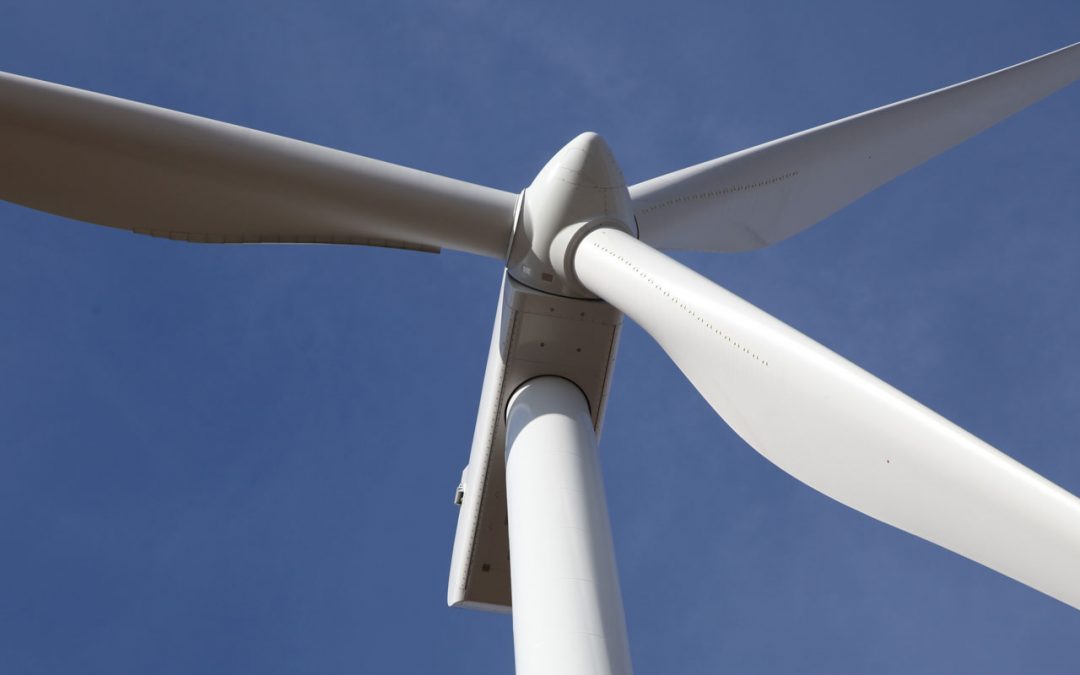
by Michael Vickerman | Feb 23, 2018 | Renewables, Solar, Utilities, Wind
Madison Gas & Electric’s efforts to transition to a low-carbon energy resource mix are accelerating, as documented in recent correspondence from company president and CEO Jeff Keebler. These sustainability initiatives will, according to Keebler, enable MGE to reduce carbon emissions by 40% by 2030 (base year 2005), a central objective of the company’s Energy 2030 framework. Beyond that, Keebler states that MGE will continue its pursuit of deep decarbonization through 2050, the year it aims to have achieved an 80% reduction in carbon emissions from 2005 levels.
A number of initiatives highlighted in MG&E’s letter stand out.
- Ground has been broken on the company’s 33-turbine, 66 megawatt (MW) wind power plant in northeast Iowa. The Public Service Commission (PSC) approved MGE’s application to build its Saratoga wind farm in November.
- The PSC is reviewing a request from MGE and two other utilities to purchase the Forward Wind Energy Center located in Fond du Lac and Dodge counties. Chicago-based Invenergy built the 86-turbine, 142 MW project, which started producing electricity in May 2008. The PSC is likely to approve the sale next month.
- MGE is teaming up with WEC Energy Group, the state’s largest electric utility, to build and own solar projects that will when completed become the largest of its kind in the state. MGE’s share of these installations will amount to 50 MW, which is expected to generate enough electricity to match the annual usage of 16,500 households. Across Wisconsin today, solar generating capacity totals 85 MW. This project will require PSC approval.
MGE is also working with larger customers to supply them with electricity from new renewable energy sources built in the utility’s service territory. Under MGE’s Renewable Energy Rider program, commercial customers should be able to access renewable electricity produced off-site at a cost comparable to standard service.
Finally, MGE is partnering with the City of Madison to accelerate the electrification of the latter’s bus fleet. Madison’s first three electric buses will arrive in 2019. Electrification of fleet vehicles is one of the areas of collaboration specified in a bilateral Memorandum of Understanding taking effect in September 2017.
For more information on MGE’s sustainability initiatives, visit www.energy2030together.com
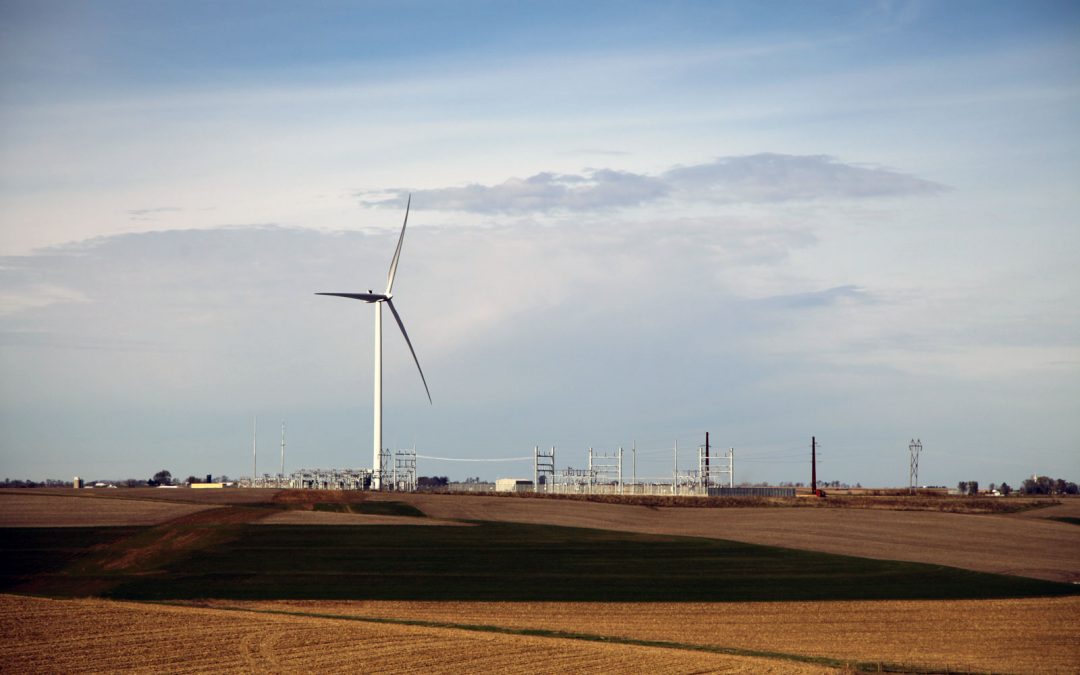
by Michael Vickerman | Feb 8, 2018 | Wind
As reported in the American Wind Energy Association’s (AWEA) most recent snapshot of market activity, U.S. developers and electric utilities installed more than 4,000 megawatts (MW) of wind power capacity in the fourth quarter of 2017, accounting for more than half of the total wind generation placed in service over the last 12 months. In the final three months of 2017, 29 new wind farms came online across 16 states, including the 49-turbine, 98 MW Quilt Block project in southwest Wisconsin.
The 7,000 MW of wind turbines built last year pushed total U.S. capacity to more than 89,000 MW, which in an average year should produce enough electricity to equal the annual consumption from 26 million households. Wind power accounts for more than 8% of U.S. generating capacity in the United States today according to the U.S. Energy Information Administration.
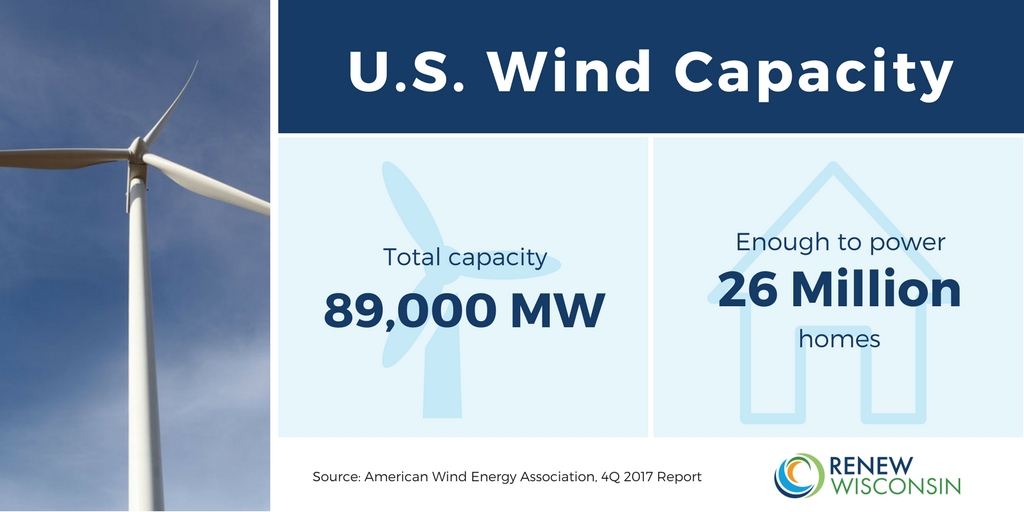
Development activity last year was particularly robust in the states of Texas, Oklahoma, Kansas, and Iowa. Large wind energy projects also sprouted up across the Upper Midwest, the second-most active region after the Southern Plains states.
Quilt Block is the first utility-scale wind energy installation to come online in Wisconsin since WEC Energy’s Glacier Hills project in 2011. Owned and operated by Houston-based EDP Renewables, Quilt Block is now the most productive wind power project in the Badger State. La Crosse-based Dairyland Power Cooperative purchases the output from this project to supply the distribution cooperatives and municipal utilities in its system.
According to the AWEA report, the powerful growth experienced by the wind industry last year should continue in 2018 and beyond. The pipeline of wind farms under construction or in advanced development totals 28,668 MW, about one-third of the wind generating fleet now operating in the United States. Projects in the development pipeline should be completed and operating before the end of 2019.
Said AWEA ceo Thomas Kiernan in a press release: “This American success story will continue, with the wind project construction and advanced development pipeline four times greater than the amount installed in 2017. That means tens of billions in additional infrastructure investment is on its way to the United States of America.”
Among Upper Midwest states (see table below), the near-term outlook for future wind development ranges from very active (states beginning with the letter “I”) to quiet (Missouri and Wisconsin). In Wisconsin, there is no project in the development pipeline right now, a consequence of the ongoing absence of policy drivers for renewables and the comparative ease of permitting and building wind projects in neighboring states. It should be noted that two Wisconsin utilities are planning to add wind power to its power supplies this year, Madison Gas & Electric from a 66 MW installation in Iowa, and WPPI Energy from a 132 MW project in Illinois.
